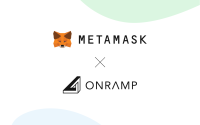Kakarot zkEVM: Empowering Provable Transactions On Ethereum
A new implementation of the Ethereum Virtual Machine (EVM) called Kakarot zkEVM has emerged, bringing forth a breakthrough in provable transactions. Developed by Pierre Corbin and Hugo Ferrer, Kakarot zkEVM is built on the Cairo programming language and leverages the CairoVM and ZK-STARK proof system to achieve provable compute.
Kakarot zkEVM is an Ethereum Virtual Machine (EVM) implemented in Cairo.
It leverages STARK proofs for provable transactions and blocks, ensuring transparency and security.
Thanks to validity proofs, Kakarot can inherit security from Ethereum L1 while enabling lower costs.
— Kakarot zkEVM (@KakarotZkEvm) June 2, 2023
Kakarot zkEVM
Kakarot zkEVM enables developers to build and deploy EVM apps, offering compatibility with Solidity and other EVM-compatible languages. Users can interact with dApps on Kakarot using their familiar toolchain, including Metamask and WalletConnect. The goal is to provide a seamless experience comparable to Ethereum or Polygon.
Interoperability and composability are key aspects of Kakarot’s roadmap. The platform aims to facilitate integration with native Starknet protocols and enable the combination of Total Value Locked (TVL) in decentralized finance (DeFi) with the user base in GameFi.
One of the unique features of Kakarot zkEVM is its flexibility in deployment. It can exist as a smart contract on top of Starknet Layer 2, exposing an EVM with Ethereum RPC and transactions on the Starknet network. Alternatively, Kakarot can be integrated into a stack to deploy Layer 3 zkEVMs, where the Madara sequencer plays a crucial role.
Kakarot and Madara
By combining Madara, a Starknet full node, with Kakarot, an EVM runtime, a Layer 3 zkEVM is created. The stack consists of a substrate full node utilizing the CairoVM as the execution engine and Kakarot as the runtime for smart contracts. Transactions executed on Kakarot can be proven and verified on a settlement layer, leading to EVM-compatible fractal scaling.
The roadmap for Kakarot zkEVM involves three phases. In Phase 1, Kakarot will be deployed on Starknet, enabling developers to deploy their Solidity smart contracts directly on Starknet. Users will have a familiar experience using their preferred toolchain.
Phase 2 focuses on combining Kakarot and Madara to enable Layer 3 zkEVMs. This allows teams to deploy zkEVM app-chains and leverage validity proofs for settling transactions on Starknet. The ability to verify transactions off-chain or on a higher layer brings benefits such as reduced gas costs and increased performance.
Quest for L1 Consensus
Phase 3 explores the possibility of Kakarot becoming a type 1 zkEVM client, capable of proving L1 consensus. This advanced use-case relies on Ethereum’s roadmap, including the Verge and the potential switch from Pedersen Merkle Patricia Trie (MPT) to Keccak MPT.
Kakarot’s development also delves into research topics such as cross-rollup communication utilizing the substrate messaging protocol, innovation with consensus protocols enabled by Substrate’s modularity, and forkless runtime upgrades for evolving the EVM version.
As Kakarot zkEVM introduces provable transactions and scalability enhancements, it sets the stage for greater adoption and advancement in the realm of Ethereum-based applications. The project demonstrates the potential for improving security, efficiency, and compatibility in the decentralized finance ecosystem.



